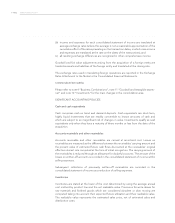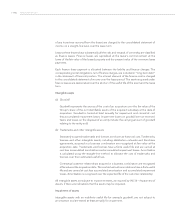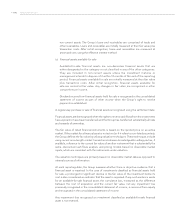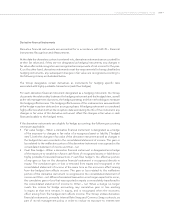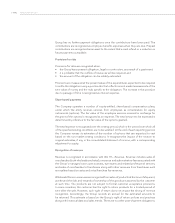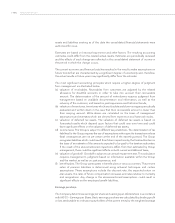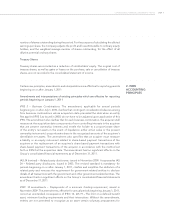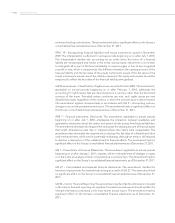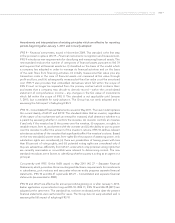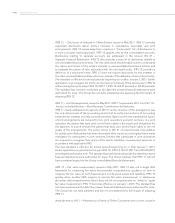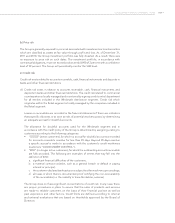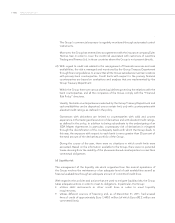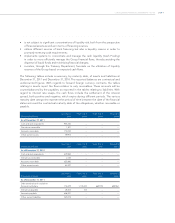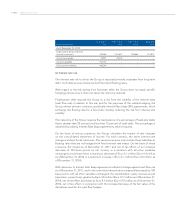LensCrafters 2011 Annual Report Download - page 196
Download and view the complete annual report
Please find page 196 of the 2011 LensCrafters annual report below. You can navigate through the pages in the report by either clicking on the pages listed below, or by using the keyword search tool below to find specific information within the annual report.
ANNUAL REPORT 2011> 120 |
assets and liabilities existing as of the date the consolidated financial statements were
authorized for issue.
Estimates are based on historical experience and other factors. The resulting accounting
estimates could differ from the related actual results. Estimates are periodically reviewed
and the effects of each change are reflected in the consolidated statement of income in
the period in which the change occurs.
The current economic and financial crisis has resulted in the need to make assumptions on
future trends that are characterized by a significant degree of uncertainty and, therefore,
the actual results in future years may significantly differ from the estimate.
The most significant accounting principles which require a higher degree of judgment
from management are illustrated below.
(a) valuation of receivables. Receivables from customers are adjusted by the related
allowance for doubtful accounts in order to take into account their recoverable
amount. The determination of the amount of write-downs requires judgment from
management based on available documentation and information, as well as the
solvency of the customer, and based on past experience and historical trends;
(b) valuation of inventories. Inventories which are obsolete and slow moving are periodically
evaluated and written down in the case that their recoverable amount is lower than
their carrying amount. Write-downs are calculated on the basis of management
assumptions and estimates which are derived from experience and historical results;
(c) valuation of deferred tax assets. The valuation of deferred tax assets is based on
forecasted results which depend upon factors that could vary over time and could
have significant effects on the valuation of deferred tax assets;
(d) income taxes. The Group is subject to different tax jurisdictions. The determination of tax
liabilities for the Group requires the use of assumptions with respect to transactions whose
fiscal consequences are not yet certain at the end of the reporting period. The Group
recognizes liabilities which could result from future inspections by the fiscal authorities on
the basis of an estimate of the amounts expected to be paid to the taxation authorities.
If the result of the abovementioned inspections differs from that estimated by Group
management, there could be significant effects on both current and deferred taxes;
(e) valuation of goodwill. Goodwill is subject to an annual impairment test. This calculation
requires management’s judgment based on information available within the Group
and the market, as well as on past experience; and
(f) benefit plans. The Group participates in benefit plans in various countries. The present
value of pension liabilities is determined using actuarial techniques and certain
assumptions. These assumptions include the discount rate, the expected return on
plan assets, the rates of future compensation increases and rates relative to mortality
and resignations. Any change in the abovementioned assumptions could result in
significant effects on the employee benefit liabilities.
Earnings per share
The Company determines earnings per share and earnings per diluted share in accordance
with IAS 33 – Earnings per Share. Basic earnings per share are calculated by dividing profit
or loss attributable to ordinary equity holders of the parent entity by the weighted average


